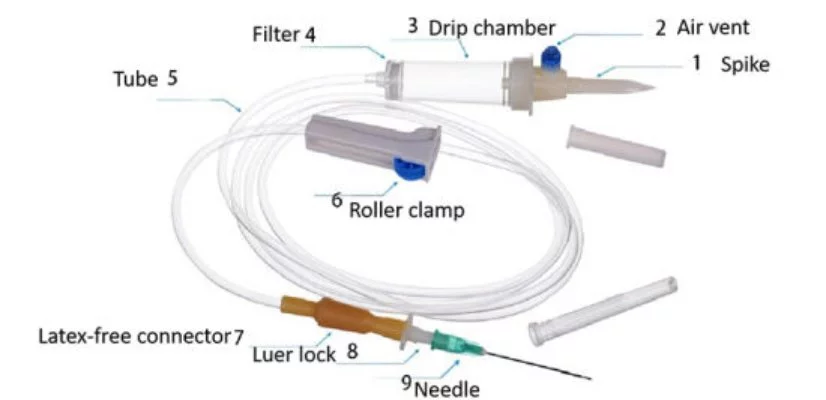Blood transfusion sets are vital medical devices for the safe and effective control of blood products. They are crucial in healthcare settings like hospitals, clinics, and emergency rooms, where blood transfusions treat conditions, replace blood loss, and support surgeries. In this blog, we’ll explore their components, mechanisms, and significance in transfusion medicine. By the end, you’ll understand how these sets ensure the safe and efficient delivery of blood products to patients.
- Understanding Blood Transfusions: Before delving into the specifics of blood transfusion sets, it is essential to grasp the concept of blood transfusions themselves. Blood transfusions involve the transfer of blood or blood components from a donor to a recipient. Doctors commonly use these procedures to replenish blood volume, replace specific blood components, or supply essential factors that support the body’s physiological functions.
Blood transfusions are crucial in surgeries, trauma, anemia management, and treating diseases. Compatibility between donor and recipient blood types is assessed to minimize adverse reactions.
- Components of a Blood Transfer Set: A blood transfer set consists of several essential components that work together to facilitate the safe and efficient delivery of blood products. These components include:
- Blood Bag: The blood bag serves as the container for the donated blood or blood components. The blood bag is sterile and flexible plastic, designed to preserve the integrity and sterility of blood products.
- Tubing: The tubing connects the blood bag to the recipient’s vein. Typically, medical-grade plastic is used to make the tubing, ensuring sterility and flexibility for easy maneuverability during the transfer process.
- Needle or Catheter: Healthcare providers use a needle or catheter to access the recipient’s vein for blood transfer. They insert it into a suitable vein and securely connect it to the tubing.
- Filter: Some blood transfer sets have filters that remove contaminants or clots from the blood product before reaching the recipient.
- Clamps and roller clamps regulate the flow rate of blood products during transfer. Healthcare professionals can control the speed of blood control, ensuring patient safety and comfort.
- Additionally, injection ports and Y-sites also offer the flexibility to introduce medications or fluids as needed during the transfusion process. They provide strength in medication control or compatibility with other medical devices.
Disclaimer
The information provided is for general knowledge only. Consult your doctor for personalized advice and treatment. Medikart HealthCare is not liable for any actions taken based on this info.

